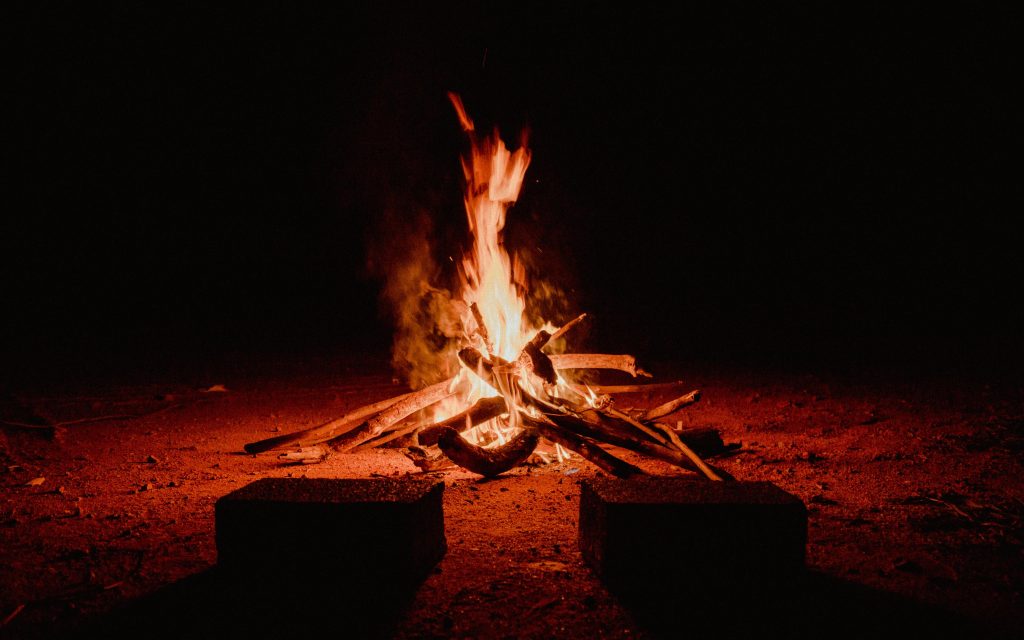There’s nothing like gathering around a crackling campfire on a chilly night, sharing stories, and roasting marshmallows. But if you’re not a seasoned outdoorsman, building a campfire can be a daunting task. The struggle to keep a fire going can make even the most experienced camper feel frustrated. But fear not! In this article, we’ll provide you with the ultimate guide to building a campfire that will never stay lit.

Before we get started, it’s important to note that building a campfire requires responsibility and caution. Make sure you’re following all rules and regulations for the area you’re camping in, and be sure to use designated fire pits or clear a safe area of at least 10 feet in diameter. And always keep a bucket of water or shovel nearby in case the fire gets out of control.
With that said, let’s dive in!
Choosing the Right Location
When it comes to building a campfire, location is everything. Choosing the right spot can make all the difference in whether your fire will be successful or not.
First and foremost, you’ll want to make sure you’re in a designated campfire area, if available. If not, choose a spot that’s at least 200 feet away from any buildings, trees, or other combustible materials. You’ll also want to make sure the ground is clear of any grass, leaves, or other debris that could catch fire.
Once you’ve found a safe spot, you’ll want to dig a shallow pit to contain the fire. This will help keep the flames under control and prevent them from spreading. The pit should be no more than 2 feet in diameter and 6 inches deep.
Gathering Materials
Now that you’ve found the perfect location for your campfire, it’s time to gather materials. The key to a successful fire is having the right materials on hand.
Start by collecting tinder. This is the material that will catch fire easily and help ignite the rest of the fire. Good options for tinder include dry grass, leaves, bark, or small twigs.
Next, gather kindling. This is the material that will help sustain the fire once it’s started. Good options for kindling include small sticks, branches, or wood shavings.
Finally, gather fuel. This is the material that will keep the fire burning for an extended period of time. Good options for fuel include larger sticks and logs.
Building the Fire
Now that you have all your materials gathered, it’s time to start building the fire.
Start by placing the tinder in the center of the pit. Be sure to crumple it up to create as much surface area as possible. Next, arrange the kindling around the tinder in a teepee shape, leaving a small opening at the bottom to light the tinder.
Once the teepee is built, light the tinder at the bottom and let it catch fire. As the fire starts to grow, slowly add more kindling, being careful not to smother the flames.
Once the fire is established, add fuel as needed to keep it burning. But be careful not to add too much fuel at once, as this can smother the flames and cause the fire to go out.
Troubleshooting
Even with the best intentions and preparation, sometimes a campfire just won’t cooperate. But don’t give up hope! Here are some common problems and solutions:
- The fire won’t start: If the tinder isn’t catching fire, try adding more or using a fire starter, such as matches, lighter fluid, or a fire starter log.
- The fire keeps going out: If the fire keeps going out, it’s likely because there isn’t enough oxygen. Try rearranging the kindling to allow for more airflow
- The fire is too smoky: If the fire is producing a lot of smoke, it’s likely because the wood is damp or not seasoned. Try using dry, seasoned wood for a cleaner burn.
- The fire is too hot: If the fire is too hot, it can be dangerous and difficult to control. Try adding less fuel at a time to keep the flames at a manageable level.
- The fire is too small: If the fire is too small, it may not be providing enough heat for cooking or keeping warm. Try adding more fuel to increase the size of the fire.
- Remember, building a campfire is all about trial and error. Don’t be afraid to experiment with different materials and techniques until you find what works best for you.
In conclusion, building a campfire can be a fun and rewarding experience, but it requires responsibility and caution. By choosing the right location, gathering the right materials, and following proper techniques, you can build a campfire that will never stay lit. And if all else fails, don’t be afraid to ask for help or advice from more experienced campers. Happy camping!
